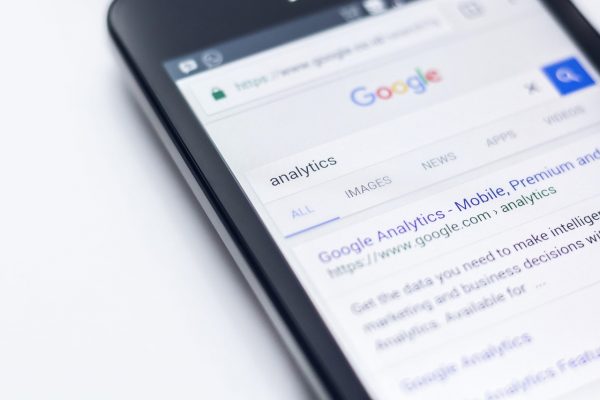

How to Use Google PMAX Audience Signals to Drive Smarter Conversions
How to Use Google PMAX Audience Signals to Drive Smarter Conversions
Every marketer dreams of running campaigns that not only drive conversions, but also deliver true business value. With Google’s Performance Max (PMAX), the promise becomes even more exciting, thanks to the advancements in AI-driven optimization. Yet the magic of PMAX doesn’t just happen on its own. One of the most powerful ingredients? Audience signals.
If you’re wondering what audience signals are, how they actually work behind the scenes, or how you can leverage them to boost your conversion quality, you’re in the right place. Over the years, I’ve managed dozens of PMAX campaigns and seen firsthand the difference that smart audience management can make. Let’s break down the essentials and uncover strategies you can apply to achieve better results from your next campaign.
What Are Audience Signals in PMAX and How Does Google Use Them?
Think of audience signals as directional cues for Google’s AI. When you set up a PMAX campaign, Google’s machine learning will try to find new customers based on your goals. Audience signals don’t act as rigid boundaries. Instead, they nudge the algorithm toward the types of users you believe are most likely to convert.
In practice, this means you’re supplying Google with audience suggestions. Such as recent website visitors, past converters, or users who’ve interacted with similar products. Google uses these cues as a learning shortcut to jumpstart its audience discovery, analyzing who actually responds and fine-tuning targeting as your campaign runs.
What’s important to remember: audience signals aren’t the same as hard targeting. You’re giving Google a head start, guiding the system toward your best prospects, but allowing the AI to expand if data shows there are more conversion opportunities elsewhere.
Here’s the beauty of this setup: your insights about your business and customers are combined with Google’s vast reach and automation. The result, when handled well, is smarter, more efficient conversion growth.
Structuring First-Party and Custom Audiences for Better AI Training
Not all audience signals are created equal. The most powerful signals are often those built from your own first-party data. Think customer lists, CRM data, and recent site converters. These are people who have already demonstrated real interest in what you offer, and feeding this data into PMAX can significantly accelerate AI learning.
Here’s how to approach it:
- Start with first-party data: Upload your customer lists, especially those who’ve completed conversions or are high-value repeat buyers.
- Use custom segments: Create audience signals based on specific behaviors or interests. For example, build lists around users who visited certain product pages or completed micro-conversions like downloading a resource.
- Layer for granularity: Instead of stuffing every possible segment into a single asset group, separate them. Create different asset groups for each major signal. This makes it much easier to analyze which audience triggers are actually producing results.
One tactic I’ve seen work is pairing a custom intent audience (based on high-intent searches or site actions) with a lookalike segment drawn from your CRM. PMAX will then start with two very clear directions. Users already invested in your offerings, plus a group of people who resemble your most loyal customers.
Tips for Refining Audience Intent Signals to Increase Conversion Quality
Let’s say you’ve set up your foundation: strong first-party and custom audience segments. The next level is refining these signals for even better outcomes. The secret isn’t in adding more audiences, but in sharpening your understanding of intent.
Here are some proven tips:
- Prioritize high-intent actions: Focus on audiences who have shown serious buying intent. Such as completing a product demo request, starting a checkout, or browsing high-value product categories.
- Leverage Search Term Insights: Regularly scan search term insights from your PMAX campaign. If you notice new queries driving conversions, use them as the basis for new custom segments.
- Exclude low-intent or irrelevant audiences: If certain signals draw in traffic that bounces or never converts, don’t hesitate to remove or exclude them. This helps you maintain campaign quality.
- Monitor asset group performance: Asset groups linked to high-intent signals should consistently outperform generic ones. If not, dive deeper to understand if your audience definitions are too broad. Or if your creative isn’t resonating.
Real-world experience: A retail client I worked with consistently refreshed their high-intent audiences based on signals from their loyalty program and post-purchase surveys. The result? Not just more conversions, but a clear jump in order value and repeat customers.
Common PMAX Audience Signal Mistakes. And How to Steer Clear
Every smart marketer has learned a lesson or two from a misstep in PMAX campaigns. Having worked through plenty of campaigns myself, some stumbles stand out:
1. Treating audience signals as strict targeting
If you expect Google to restrict ads solely to your audience suggestions, you’re due for a surprise. PMAX will use your cues for discovery, but it always prioritizes conversion data and learning.
2. Overloading asset groups
Stuffing multiple audience signals into a single asset group muddies your data. Granularity is your friend; distinct asset groups help you assess what’s actually working.
3. Using low-quality lists
Uploading outdated or loosely defined customer lists results in poor guidance and wasted spend. Always vet your data before using it to steer the algorithm.
4. Neglecting negative audiences
Sometimes, the best refinement comes from exclusion. If repeat non-converters or existing customers don’t fit your goal, create negative lists to fine-tune outcomes.
5. Forgetting to monitor and optimize
Leaving your audience signals untouched over time (even when results are slipping) is a major pitfall. PMAX rewards proactive management and periodic tweaks.
When to Refresh or Remove Audience Signals Based on Campaign Data
Audience signals are not a set-it-and-forget-it lever. After your campaign runs for a while, you’ll notice clear trends in which signals guide Google to your best leads. And which ones fall flat.
Wondering when it’s time to make a change? Here’s what to watch:
-
Conversion rates dropping within an asset group
If an asset group linked to a particular audience signal starts to underperform, reassess. It’s possible your audience definition is too broad, no longer relevant, or being overshadowed by fresher signals. -
Emergence of new high-performing search terms
Sometimes, a new segment or behavior appears in your data. Cluster this audience, build a new signal, and introduce it to your campaign. -
Stagnant or high-cost conversions
If you’re paying more per conversion, consider pruning audience signals that are no longer effective or have reached saturation. -
Regular review cycles
Put a calendar reminder in place for scheduled audience audits. Monthly or quarterly. So your campaigns never run on autopilot.
One insight from practice: after refreshing signals based on recent purchasers and excluding past converters, a campaign I managed saw a 25% lift in lead quality within a single quarter. Continual data-driven refinement is what keeps PMAX performing at its best.
Bringing It All Together: Make Every Signal Count
Driving smarter conversions with Google PMAX isn’t about setting the most complex campaign or having the largest customer file. Success comes from understanding how audience signals can shape the direction. And then being intentional about how you structure, refine, and regularly revisit them.
Every business offers unique value, and your audience signals are the bridge between your insights and Google’s powerful AI. By layering your best first-party data with sharp custom segments, then keeping a close eye on performance, you can guide PMAX towards the results you genuinely want: higher quality leads, stronger ROI, and more meaningful business growth.
So, are you ready to elevate your PMAX campaigns? Start rethinking your audience signals, track your progress, and keep your optimizations in motion. The next step forward can lead to smarter conversions and a campaign performance you’re genuinely proud of.
Frequently Asked Questions
What are audience signals in PMAX and how are they different from traditional audience targeting?
Audience signals in PMAX provide suggestions to Google’s AI about which users are likely to convert. Unlike traditional targeting, they don’t set hard boundaries. Google uses your suggestions as a starting point but will expand to other audiences if it believes it can find more conversions.
How can I build stronger first-party audiences for PMAX?
You can create robust first-party audiences by uploading recent customer lists, integrating CRM data, and building segments based on website engagement or purchase history. Regularly updating these lists keeps your signals sharp and relevant.
When should I remove or refresh audience signals in a PMAX campaign?
Remove or refresh signals when their linked asset groups start performing poorly, when new high-performing segments emerge, or as part of regular review cycles. This keeps your campaign aligned with changes in your audience and business goals.
What mistakes should I avoid with audience signals?
Common mistakes include using outdated data, stuffing too many signals into an asset group, neglecting negative audiences, and failing to revise signals as campaign performance evolves.
Can I see which audience signals are performing best in PMAX?
While PMAX doesn’t break out performance by signal, you can create different asset groups for each signal and monitor their individual results. This helps you determine which signals are actually driving conversions.







